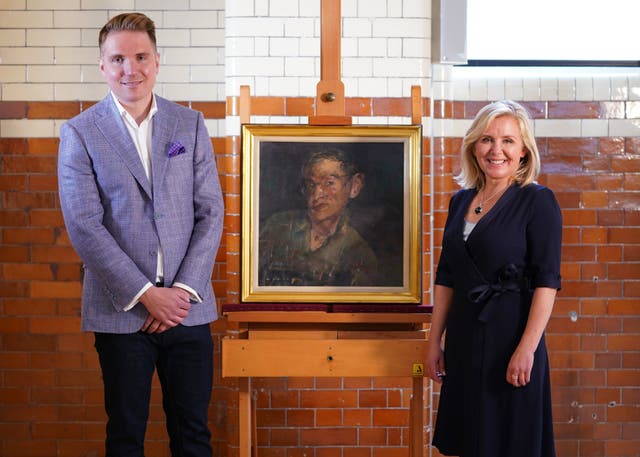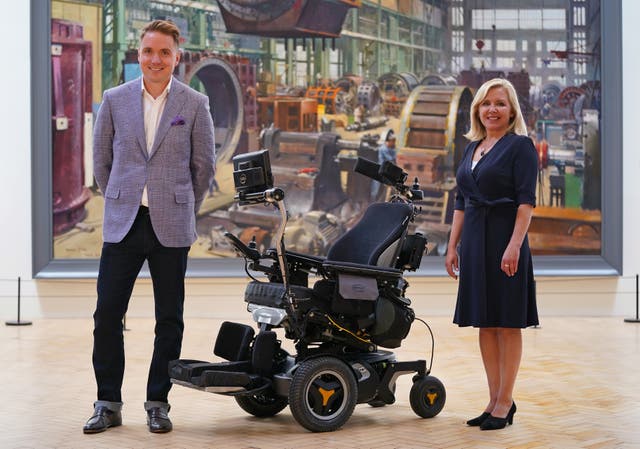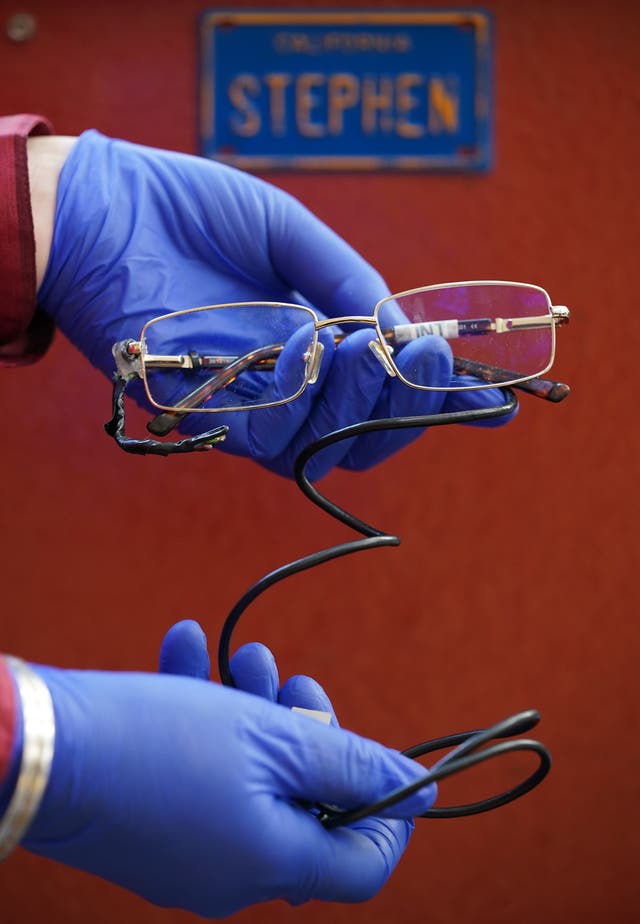Items belonging to Professor Stephen Hawking – from landmark papers on theoretical physics to his scripts from The Simpsons – have been acquired by two UK cultural institutions.
A landmark acceptance in lieu (AIL) agreement between Cambridge University Library, the Science Museum Group and the UK Government will see Prof Hawking’s archive of scientific and personal papers remain at the university Library.
The entire contents of his office will be preserved as part of the Science Museum Group Collection, with selected highlights going on display next year, including personalised wheelchairs and scientific bets signed with his thumbprint.
The Cambridge archive contains letters dating from 1944 to 2008, a first draft of his book A Brief History Of Time, film and TV scripts, and autographed scientific manuscripts from the early phase of his career.
There is also a large collection of photographs, papers and correspondence showing how he communicated with popes, US presidents and leading scientists of the age, including Nobel Prize winners Kip Thorne and Roger Penrose.
Cambridge’s acquisition of the 10,000-page archive means Prof Hawking’s papers join those of Sir Isaac Newton and Charles Darwin.
This brings all three archives together under one roof at Cambridge University Library, where they will be freely accessible to the scientists of tomorrow.
When his PhD thesis was digitised and made freely available by the University Library in 2017, Prof Hawking said: “Each generation stands on the shoulders of those who have gone before them, just as I did as a young PhD student in Cambridge.”
Prof Hawking occupied an office at the University of Cambridge’s Department of Applied Mathematics and Theoretical Physics from 2002 until shortly before his death.
Selected items will go on public view for the first time at the Science Museum in early 2022.

Later next year, people will be able to explore hundreds of items from his working life when the acquisition is catalogued, photographed and published to the Science Museum Group’s online collection.
His children Lucy, Tim and Robert Hawking said: “We are very pleased that these two important institutions will preserve our father’s life’s work for the benefit of generations to come and make his legacy accessible to the widest possible audience.
“Our father strongly believed that everyone should have the chance to engage with science so he would be delighted that his legacy will be upheld by the Science Museum and Cambridge University Library.
Lucy Hawking told the PA news agency that as a child her father would be dropped off at the Science Museum in the morning and left there all day and he loved the institution.
She explained that going through his archive had given the family a chance to rediscover some items they have not seen for some time, including a “very moving and terribly sweet” letter he wrote to his parents aged six.

She said: “He’s writing to his parents and he’s telling them that he’s written a story and that it’s about pirates.
“I mean it’s just a very sweet short letter from a six-year-old in kind of very endearing scruffy handwriting that kind of spiders across the page not in straight lines – very recognisable I think to any parent.”
It was very important to Prof Hawking to keep broadening the scope of his public outreach in terms of engagement with science, Lucy Hawking told PA.
She added: “That’s why he made such a great effort to communicate his thoughts and to write in a popular and accessible style.
“This is sort of the final stone, if you like, of a great career in outreach and public engagement, as well as one in outstanding scientific discoveries.”
Prof Hawking, one of the most renowned scientists in his field, was diagnosed with motor neurone disease in 1964 at the age of 22 and given just a few years to live.

The father of three was later confined to a wheelchair and relied on a computer to communicate, but continued to travel the world to present lectures and further scientific knowledge.
He inspired the masses with his insight, humour and success against the odds with MND, which left him nearly totally paralysed.
He died at the age of 76 in March 2018 and his ashes were interred in Westminster Abbey alongside Sir Isaac Newton.
Sir Ian Blatchford, director of the Science Museum Group, told PA: “I think that for me and the curators working on this, I think the word that sums up how they feel is elation.
“Because, first of all, he had a genuinely close relationship with us. I mean he was a fellow with a museum, and he really loved the place.
“Both he and his family, we’ve been close to them for years so there’s a very strong personal link.

“But also, it’s such a great resource because obviously Stephen’s life is amazing and had many layers to it, but also it’s a great symbolism about science itself.”
He said: “These remarkable items might even inspire the next Professor Hawking to wonder about the world around us.”
Cambridge University librarian Jessica Gardner told PA: “There is something profoundly important to me about the archive being preserved in Cambridge where he did his work, alongside the work of his hero, Newton, and so many other scientists who have lived and worked in Cambridge, it’s a really important part of the legacy.”




Comments: Our rules
We want our comments to be a lively and valuable part of our community - a place where readers can debate and engage with the most important local issues. The ability to comment on our stories is a privilege, not a right, however, and that privilege may be withdrawn if it is abused or misused.
Please report any comments that break our rules.
Read the rules here